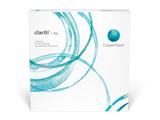What is Acanthamoeba keratitis (eh-can-tha-mee-bah kehr ah tie-tus)?
It refers to a rare eye infection that can end in devastating results, like the loss of an eye or permanent blindness.
According to the Centers for Disease Control and Prevention, the Acanthamoeba species are ubiquitous microscopic organisms found in lake water and soil. But, these organisms can also be found in swimming pools, hot tubs, and even drinking water. *
Many people are exposed to these organisms, but few will actually become infected as they often wash off. Infection of Acanthamoeba keratitis could happen through cuts or other eye traumas; exposure to contaminated water; or poor hygiene concerning eye health routines.
What are the symptoms of Acanthamoeba keratitis?
Symptoms of Acanthamoeba keratitis include the following:
- Sensitivity to light and excessive tearing
- Blurred vision with eye redness and pain
- Sensations of having something in your eye
- Severe headaches
If you experience any of these symptoms, don’t shrug them off. Call your doctor immediately. Mention if you have been swimming and where. Any information that you can provide may help.
Treatments are available for Acanthamoeba keratitis, but early diagnosis is essential.
What can I do to help reduce the chances of contracting Acanthamoeba keratitis?
A trauma to the cornea (the clear dome that covers your eye), along with exposure to Acanthamoeba species—especially with people who have a compromised immune system—can lead to an infection of Acanthamoeba keratitis, according to the American Academy of Ophthalmology.**
Always follow safety guidelines for good hygiene at all times since Acanthamoeba keratitis can strike both people who do and do not wear contact lenses.
If you do wear contact lenses, you can help reduce your chances of being infected with Acanthamoeba keratitis by following these tips:
- Use the “rub and rinse” method when cleaning your contact lenses
- Replace your contact lens case at least once every three months
- Always use fresh cleaning solution—never top off old solution with new
- Completely follow your eye doctor’s recommendations for contact lens care
Trying to save a few pennies by stretching out your lens replacement schedule or cleaning solution simply isn’t worth the risk.
And, as stated in our article on not swimming in contacts, avoid taking a shower while wearing your lenses. Even your fresh household water contains impurities that can be trapped by your contact lenses.
Millions of people wear contact lenses safely every day. However, there is a reason why your eye doctor presents you with guidelines to contact lens care. Follow them and enjoy the freedom that contacts can offer.






